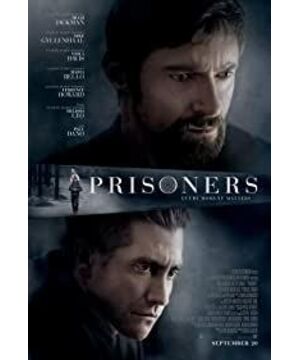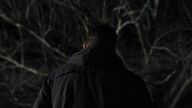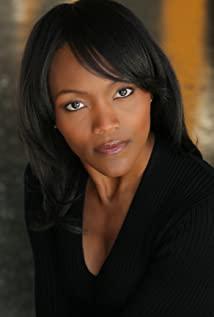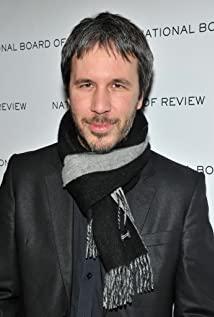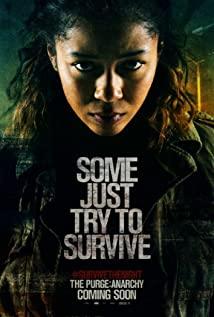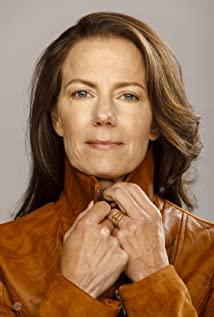"The Prisoner" begins with a slow pull-back dolly shot. The bleak wind blasts in his ears. The protagonist Keller recites the Lord’s Prayer in the Bible in a low voice. At the same time, a deer looking for food appeared in the forest in the distant view. It appeared to be alert and cautious. The straight trees are like fences separating this fragile creature from the audience. As Keller murmured, the camera gradually pulled back to the middle shot of the two of them. In the picture, the son with the shotgun and Keller from the left and right were slowly shown. When Keller's "Amen" voice fell, there was a sound. The dull gunfire sounded, and the deer in the woods in the distance fell down. Normally, since the audience cannot see anything outside the frame, the zoom lens that is pulled back is easy to frighten the audience by suddenly revealing the position information. In this opening scene, the movement of the camera was slow and depressing, and the shotgun was drawn into the audience in an irresistible way from the barrel to the whole. This opening is very important, it has Dennis Villeneuve's strong personal style, and it also laid the gloomy and cruel tone of the whole film.
Compared with "The Prisoner", Dennis Villeneuve has richer narrative techniques and video styles in the previously acclaimed "Scorched Earth City", because the story is unfolded in a multi-person perspective and memory, so More different camera positions are used on the lens, and the editing methods are more diverse. In "Scorched Earth City", his restraint on the speed of the lens has gradually become a distinctive feature. Whether it is a fixed camera position or a handheld camera position, the camera flows in the picture at a slow and heavy speed. In "Prisoner", the story is about unexpected encounters in life. The story unfolds in a linear sequence, and the narrative method is simpler. The tone of the whole movie is dark and gloomy, and the cool color is used as the basic tone of the whole film.
The uncrowned king of photography, the famous Roger Deakins (Roger Deakins), although it is the first time to collaborate with Dennis Villeneuve, he has brought the latter's strong style of dolly shot and his own sophisticated composition into full play. Extreme. The way the camera moves can often suggest the theme of a movie. Roger Diggins chose a large number of pushes in "Prisoner", which is also a good continuation of the personal style of director Dennis Villeneuve’s previous works. The first half of the film has about 20 forwards or forwards. The post-tracking shot. These motion scenes symbolize the evil and suspense surging under the current in "The Prisoner". Tracking shots are extremely suitable for exerting psychological effects on the audience. Roger uses a slow and heavy push to approach a certain scene or character, hinting that something terrible is about to happen in a gradual and unobvious way. Shortly before the beginning of the movie, the camera sneaked through the trees outside the house and aimed at the door of the two families celebrating Christmas. It seemed that a peeper was locking the prey. Although the audience at this time does not know where the danger is, they have a foreboding that something unfortunate will happen.
Tracking shots are often what the director says to the audience through characters or scenes. When the camera slowly moves towards a certain character, it will always give the audience a little expectation of this character, whether for better or worse, before the camera leaves him, the character is full of mystery. When Detective Loki appeared on the scene, the movie also used imperceptible pushes to gradually draw his back. In this complex arrangement and rich light source scene, he chatted with the waitress about the Chinese zodiac, but slowly The camera is pushed to Loki bit by bit, and the audience has been unable to see his front, and will guess his identity, triggering more imagination and adding more suspense. The space on the screen is compressed bit by bit, forming a heavy and uneasy contrast with the relaxed dialogue between the two.
Roger Diggins is a photographer who is very particular about composition. He once said: "Composition is the most critical part of the work of a cinematographer. The balance of the picture-the relationship between the actors and the film space is the most important factor to help the audience understand the thoughts of the characters. I like to approach people and feel the people in the space. Existence." A good composition helps the unfolding of the story and can further convey the meaning of the scene. Psychologists and art theorists believe that a certain part of a composition has an essential weight. In "Prisoner", Roger Diggins practically applied high-contrast silhouettes and clever frames to every shot, forming a balanced visual weight and imperceptible depth of field. When people watch a movie, their eyes will instinctively search for information on the screen in a planned way of dots, lines and planes. Usually, our eyes are easily attracted to the most contrasting part, and then we scan the area on the screen again in the order of primary to secondary. Roger Diggins likes to explain the light source in the scene, and uses color and contrast to force the audience to divert attention, giving the light source a special meaning in the movie. In a movie, the director and photographer must use different lenses to determine the size of the space, and the space within the frame is the most important thing. Because in a movie, space is an important medium of communication, and the frame can also be transformed into a variety of metaphors by the director. In "The Prisoner", Roger Dickens' pragmatism has been brought into full play. In almost every lens, objects in the scene can be used to cleverly create a frame, use water droplets, reflections and reflections to compose the picture, and borrow tones and textures to create a special depth of field. However, in some scenes, the lights are deliberately hidden, revealing only a few details in the composition, which makes the audience reverie and deepens the suspense of the movie.
Dennis Villeneuve’s movies have always focused on emergencies in life. In his own words, these characters are “handling the most difficult topics in life”. Evien, whose life was unsatisfactory in "The Maelstrom", accidentally killed a passerby and changed her life since then; the female college student Valerie in "Polytechnic" became a survivor of the campus massacre, but she had to face the trauma and regain her survival In "Scorched Earth City", Nawal, the mother who has gone through hardships, has been looking for her son all her life, but destiny arranged for them to meet in a cruel way.....In "Prisoner", people Facing the most terrifying and disturbing experience in life, Keller and his neighbor's daughter suddenly disappeared, and his courteous and approachable person has undergone a strong transformation. In previous works, Dennis often involved the relationship between religion and people. Compared with the religious conflict in "Scorched Earth", in "Prisoner", regardless of religion or cult, the more obvious religious symbols become a kind of Complex and vague consolation. Keller became violent and angry, and religion became his only refuge when lynching. Detective Loki also caused the suicide of the suspect because of his irritability, but fortunately, he finally discovered the truth and realized his own salvation. When the evil hidden like an undercurrent gradually surfaced, the boundary between sin and punishment had already become blurred.
Just as we always pray to God to "forgive our sins, as we forgive others' debts"-but what would we do if we faced Keller's experience? Fear will drive people's morals and beliefs in their hearts. Even if we sit in a safe and comfortable movie theater, our entangled moral values will conflict. This is an unimaginable problem. We ask ourselves, how much are we willing to pay in order to save the loss in our lives? Is it too late? If we have the opportunity, what kind of punishment will be given to the sinner we identify in our hearts? These questions about human nature are worthy of our thinking, and they will also make us courage to face our inner fears.
Reference materials: "Knowing Movies", "The Doorway to Watching Movies", Mtime.com, Wikipedia
View more about Prisoners reviews


